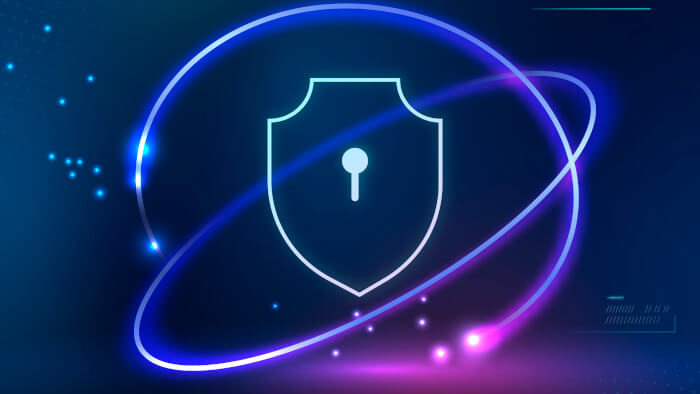Last Updated on October 20, 2023
The program SNOW is used to conceal messages in ASCII text by appending whitespace to the end of lines. Because spaces and tabs are generally not visible in text viewers, the message is effectively hidden from casual observers. And if the built-in encryption is used, the message cannot be read even if it is detected.
SNOW exploits the Steganographic Nature Of Whitespace. Locating trailing whitespace in text is like finding a polar bear in a snowstorm.
The encoding scheme used by snow relies on the fact that spaces and tabs (known as whitespace), when appearing at the end of lines, are invisible when displayed in pretty well all text viewing programs. This allows messages to be hidden in ASCII text without affecting the text’s visual representation. And since trailing spaces and tabs occasionally occur naturally, their existence should not be sufficient to immediately alert an observer who stumbles across them.
The snow program runs in two modes – message concealment, and message extraction. During concealment, the following steps are taken.
Message -> optional compression -> optional encryption -> concealment in text
Extraction reverses the process.
Extract data from text -> optional decryption -> optional uncompression -> message
Features include:
- Compression scheme used by snow is a fairly rudimentary Huffman encoding scheme, where the tables are optimised for English text. This was chosen because the whitespace encoding scheme provides very limited storage space in some situations, and a compression algorithm with low overhead was needed.
- Encryption is also provided, using the ICE encryption algorithm in 1-bit cipher-feedback (CFB) mode. Because of ICE’s arbitrary key size, passwords of any length up to 1170 characters are supported (since only 7 bits of each character are used, keys up to 1024-bytes are supported).
Website: darkside.com.au/snow
Support:
Developer: Matthew Kwan
License: Apache License v2.0
Snow is written in C. Learn C with our recommended free books and free tutorials.
| Popular series | |
|---|---|
| The largest compilation of the best free and open source software in the universe. Each article is supplied with a legendary ratings chart helping you to make informed decisions. | |
| Hundreds of in-depth reviews offering our unbiased and expert opinion on software. We offer helpful and impartial information. | |
| The Big List of Active Linux Distros is a large compilation of actively developed Linux distributions. | |
| Replace proprietary software with open source alternatives: Google, Microsoft, Apple, Adobe, IBM, Autodesk, Oracle, Atlassian, Corel, Cisco, Intuit, and SAS. | |
| Awesome Free Linux Games Tools showcases a series of tools that making gaming on Linux a more pleasurable experience. This is a new series. | |
| Machine Learning explores practical applications of machine learning and deep learning from a Linux perspective. We've written reviews of more than 40 self-hosted apps. All are free and open source. | |
| New to Linux? Read our Linux for Starters series. We start right at the basics and teach you everything you need to know to get started with Linux. | |
| Alternatives to popular CLI tools showcases essential tools that are modern replacements for core Linux utilities. | |
| Essential Linux system tools focuses on small, indispensable utilities, useful for system administrators as well as regular users. | |
| Linux utilities to maximise your productivity. Small, indispensable tools, useful for anyone running a Linux machine. | |
| Surveys popular streaming services from a Linux perspective: Amazon Music Unlimited, Myuzi, Spotify, Deezer, Tidal. | |
| Saving Money with Linux looks at how you can reduce your energy bills running Linux. | |
| Home computers became commonplace in the 1980s. Emulate home computers including the Commodore 64, Amiga, Atari ST, ZX81, Amstrad CPC, and ZX Spectrum. | |
| Now and Then examines how promising open source software fared over the years. It can be a bumpy ride. | |
| Linux at Home looks at a range of home activities where Linux can play its part, making the most of our time at home, keeping active and engaged. | |
| Linux Candy reveals the lighter side of Linux. Have some fun and escape from the daily drudgery. | |
| Getting Started with Docker helps you master Docker, a set of platform as a service products that delivers software in packages called containers. | |
| Best Free Android Apps. We showcase free Android apps that are definitely worth downloading. There's a strict eligibility criteria for inclusion in this series. | |
| These best free books accelerate your learning of every programming language. Learn a new language today! | |
| These free tutorials offer the perfect tonic to our free programming books series. | |
| Linux Around The World showcases usergroups that are relevant to Linux enthusiasts. Great ways to meet up with fellow enthusiasts. | |
| Stars and Stripes is an occasional series looking at the impact of Linux in the USA. | |
